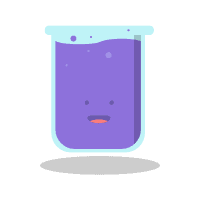
TEKS Biology High School - B.6.E: Changes In DNA
Quiz by TEKS Biology High School
High School - Biology
Science (2010) (Archived)
Texas Essential Knowledge and Skills (TEKS)
Feel free to use or edit a copy
includes Teacher and Student dashboards
Track each student's skills and progress in your Mastery dashboards
With a free account, teachers can
- edit the questions
- save a copy for later
- start a class game
- automatically assign follow-up activities based on students’ scores
- assign as homework
- share a link with colleagues
- print as a bubble sheet
12 questions
Show answers
- Q1Different types of mutations can occur in DNA. The diagram represents a type of mutation. Which statement describes the mutation in the diagram?A silent mutation results in the insertion of a different amino acidA base is inserted into one strand of the DNAA deletion of a cytosine base occursA substitution occurs with the adenine base30sB.6.E: Changes In DNA
- Q2Which of these is the direct result of an error in the transcription of a DNA nucleotide?A codon sequence is incorrectThe nuclear membrane is rupturedTransportation of mRNA does not occurAmino acids do not bond to tRNA30sB.6.E: Changes In DNA
- Q3The survival of a species depends on its ability to adapt to changes in the environment. A species must be capable of surviving and reproducing despite changes to food sources, climate, or threats from predators. Which statement correctly describes a way that mutations increase the likelihood that a species will survive in a changing environment?Mutations are the cause of disease in the speciesMutations are a source of variation in the speciesMutations are not harmful when they occur in somatic cells of the speciesMutations are always passed on to subsequent generations of the species30sB.6.E: Changes In DNA
- Q4The table shows a DNA sequence and three types of mutations that can change the DNA sequence. Which mutation will cause translation to stop?Mutation 1 onlyMutation 2 onlyMutations 1, 2, and 3Mutations 1 and 3 only30sB.6.E: Changes In DNA
- Q5A segment of DNA produces methionine, threonine, histidine, aspartate, and glycine when translated. A substitution mutation occurs and causes the synthesis of the segment as shown. Which is the new peptide chain when the new DNA segment is translated?Methionine, phenylalanine, histidine, aspartate, glycineMethionine, serine, histidine, aspartate, glycineMethionine, leucine, histidine, aspartate, glycineMethionine, proline, histidine, aspartate, glycine30sB.6.E: Changes In DNA
- Q6In the 1960s the molecular biologist George Streisinger developed the strand-slippage hypothesis. Streisinger noticed that mutations occurred in areas of DNA that contained many repeated sequences. When a strand-slippage error occurs, an insertion mutation can result. How does the insertion mutation affect the DNA?Nitrogenous bases are exchangedNitrogenous bases are deletedNitrogenous bases are damagedNitrogenous bases are added30sB.6.E: Changes In DNA
- Q7Early-onset Alzheimer’s disease affects people under the age of 65. Less than five percent of people who are diagnosed with Alzheimer’s disease have this type. Many cases of early-onset Alzheimer’s disease are inherited, a type known as familial Alzheimer’s disease (FAD). Which statement is best supported by this information?FAD is the result of a genetic change in one or more chromosomesFAD affects only the genes of middle-aged peopleDeletion of one amino acid causes FADNatural selection will continue to reduce the incidence of FAD30sB.6.E: Changes In DNA
- Q8Sickle-shaped red blood cells result from a mutation in the gene that codes for hemoglobin. This mutation results in sickle-cell anemia. A partial sequence of bases from a normal hemoglobin gene and a sequence that results in sickle-cell anemia are shown below. What type of mutation is depicted in this sequence?InsertionDeletionSubstitutionFrameshift30sB.6.E: Changes In DNA
- Q9A codon chart is shown below. Which of these changes to the DNA triplet 3’ GCT 5’ will affect the protein produced?GTTGCATCCTCT30sB.6.E: Changes In DNA
- Q10A mutation that occurs in the gametes of an organism will most likely be transferred to which of the following?The offspring of the organismThe siblings of the organismThe mating partner of the organismThe other organisms living nearby30sB.6.E: Changes In DNA
- Q11A mutation in which types of cells would only affect the organism and not future generations?Sperm cell and egg cellNerve cell and brain cellSperm cell and lung cellEgg cell and liver cell60sB.6.E: Changes In DNA
- Q12A certain mutation in the gene for hemoglobin results in the red blood cells becoming sticky, rigid, and irregularly shaped. These irregularly shaped red blood cells block the flow of blood throughout the body. A single base mutation is responsible for these irregularly shaped blood cells.Which of these mutations most likely results in the mutated hemoglobin gene?SubstitutionDeletionDuplicationInsertion60sB.6.E: Changes In DNA
